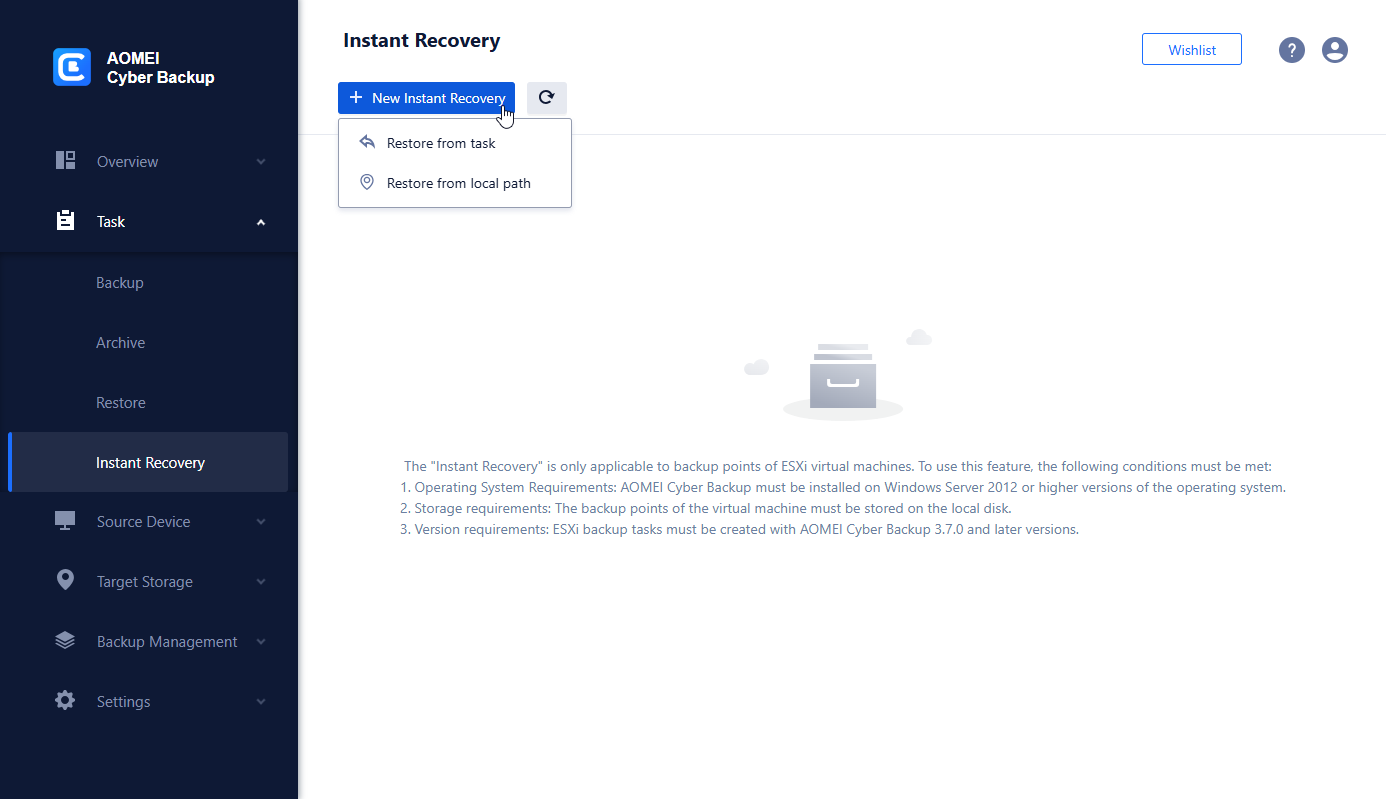Veeam’s Instant Recovery feature is a powerful tool in data management and disaster recovery. To prevent delays with migration in the future, adopt these strategies in this article.

During Veeam's Instant Recovery process, users may encounter a message that reads, “Waiting for user to start migration.” This notification suggests that while the virtual machine is currently accessible, it is still running on backup storage and not on production storage for long-term performance.

When you see in Veeam instant VM recovery "waiting for user to start migration”, it reminds that the VM still needs to be migrated to a permanent production environment for optimal functionality and performance. Until migration is completed, the VM might experience limited performance due to the nature of backup storage.
Here’s what you need to do to start the migration correctly:
1. Go to the Veeam console where you’re managing the Instant Recovery session.
2. Choose the VM currently running from the backup storage.
3. In the VM options, look for the option to “Migrate to Production” or “Complete Migration.”
4. The migration process may take time depending on the VM size, network speed, and storage capacity. Monitor the progress to ensure everything moves smoothly.
5. Once the migration is complete, verify that the VM is running on production storage.
After completing the instant recovery, you need to instantly migrate your virtual machines to the production environment for the safety of your data. AOEMI Cyber Backup is designed to provide you with a simple and reliable solution for instant recovery and also provides you with simple steps for migration to production. Also, with AOEMI Cyber Backup you can enjoy the following features and benefits:
👉Instant VM Recovery: The capability to swiftly restore backup points for ESXi VMs is essential for minimizing enterprise downtime and preventing costly financial losses. 👉Automated Backup Scheduling: You can set up VMware backup schedules to ensure your VMs are protected without intervention. 👉Multiple Storage Destination: You can save VM backups to local and external drives, NAS drives or network shares, and Amazon S3 storage buckets. 👉Intuitive User Interface: It simplifies the centralized backup and restoration process, making it accessible even for those with limited technical expertise.
Step 1. Navigate to Task > Instant Recovery > + New Instant Recovery, and choose Restore from task.

Step 2. Choose the virtual machine and backup version in Source.
Step 3. Choose the target device in the Restore to section.
Step 4. Set the hardware settings for the new virtual machine, including CPU quantity, CPU Cores, and memory size.
Step 5. Click Start Restore to start the instant recovery.
Step 6. Click Start Migration to restore the virtual machine to the production environment after the production environment resumes normal.
Q: Why does Veeam prompt for migration in Instant Recovery?
A: Veeam prompts for migration because the VM is initially running from backup storage, which is not optimized for high-performance operations.
Q: Where are Veeam instant recovery logs stored?
A: Logs are at the backup server in c:\programdata\veeam\backup per default.
Q: How can I automate migration in Veeam Instant Recovery?
A: Veeam allows users to configure automatic migration, which can be set up in the recovery options.
Q: What happens if I delay migration indefinitely?
A: Delaying migration keeps the VM in a performance-limited environment and can strain system resources, potentially impacting other processes.
Q: Is manual migration better than automatic migration?
A: It depends on your environment. Manual migration provides more control, while automatic migration simplifies the process by ensuring a quicker transition.
Q: How long does Veeam Instant Recovery migration take?
A: Migration time varies based on the size of the VM, network speeds, and storage conditions. Larger VMs or slower networks will naturally extend the migration time.
The “waiting for user to start migration” message in Veeam Instant Recovery is an important indicator that prompts users to complete the recovery cycle by transferring VMs from temporary to permanent storage. By understanding the importance of migration and following best practices for efficient execution, businesses can ensure optimal VM performance and secure their critical data.